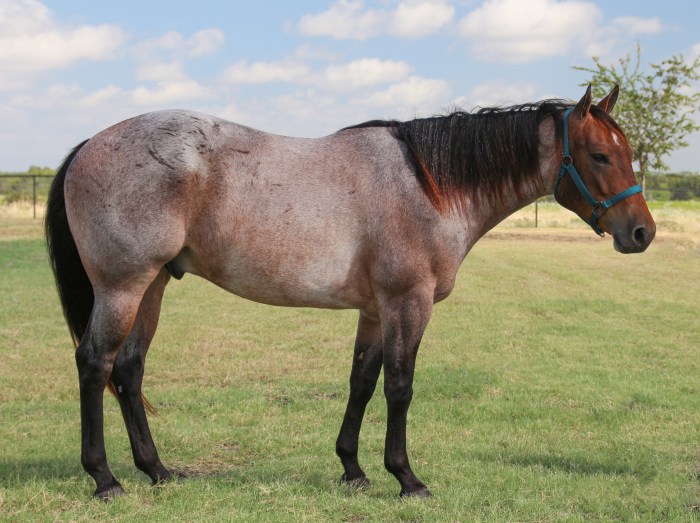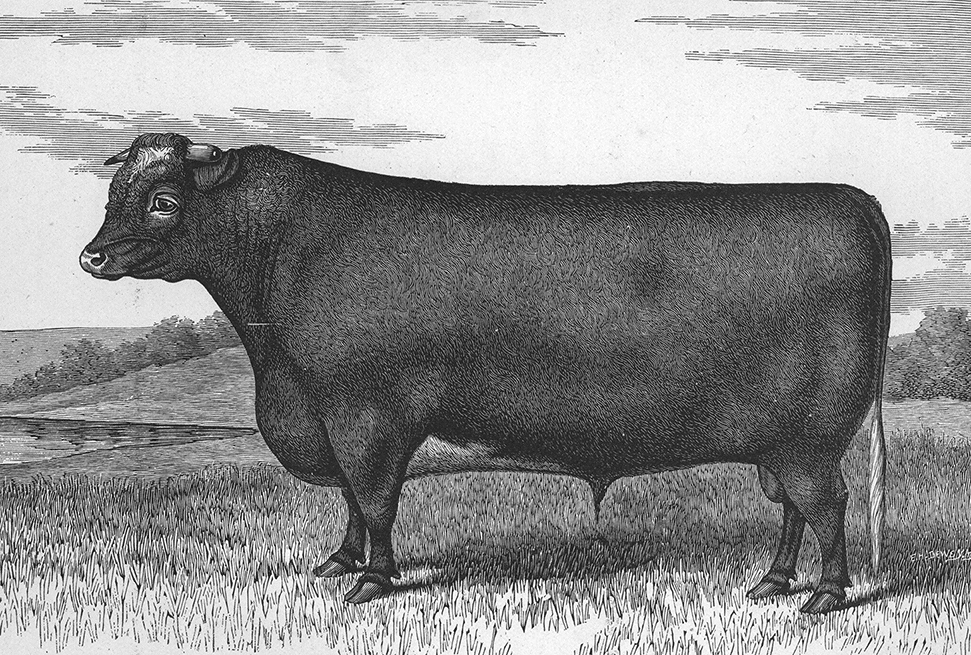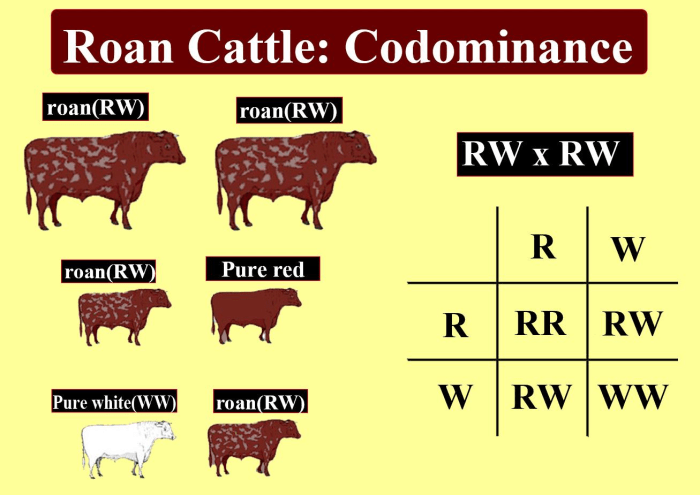In the realm of bovine grandeur, the red white and roan bull stands tall, captivating hearts with its distinctive coat and indomitable spirit. Embark on a journey into the world of these magnificent creatures, where genetics, heritage, and agricultural significance intertwine in a symphony of nature’s artistry.
Breed Characteristics: Red White And Roan Bull

The red white and roan bull is a striking and majestic breed known for its distinctive coat color and impressive physique. These bulls possess a well-proportioned body, with a muscular build and a sturdy frame. Their size and weight can vary depending on factors such as genetics and nutrition, but on average, they stand around 54-60 inches (137-152 cm) tall and weigh between 1,800-2,200 pounds (816-998 kg).
The most captivating feature of the red white and roan bull is its coat. As the name suggests, their coat exhibits a blend of three colors: red, white, and roan. The red hue can range from a deep mahogany to a vibrant cherry, while the white areas typically appear on the face, belly, and legs.
The roan pattern is a unique characteristic, resulting from a mixture of red and white hairs that creates a speckled or mottled effect. The distribution and shades of these colors vary from bull to bull, making each one truly distinctive.
Temperament and Behavior
Beyond their physical attributes, the red white and roan bull is also known for its temperament and behavior. These bulls are generally considered to be docile and easy to handle, making them suitable for both experienced and novice ranchers. They possess a calm and steady demeanor, with a strong sense of curiosity and playfulness.
However, like any large animal, proper handling and respect are crucial to ensure safety and prevent any potential accidents.
Genetics and Inheritance

The distinctive red white and roan coat color in bulls is determined by a complex interplay of genetic factors. The inheritance patterns of these color traits are governed by specific genes and their interactions.
Genetic Factors
The primary gene responsible for the red and white color pattern is the KITgene, which encodes the KIT protein. Mutations in this gene can lead to the production of a defective KIT protein, which disrupts the normal development of pigment cells (melanocytes) in the hair follicles.
This results in patches of white hair interspersed with areas of red hair.Another gene, the EDNRBgene, plays a role in the production of endothelin-3, a signaling molecule that regulates the migration and survival of melanocytes. Mutations in the EDNRBgene can lead to a reduction in endothelin-3 signaling, resulting in a more extensive white spotting pattern.
The red white and roan bull is a rare and beautiful breed. To learn more about this fascinating animal, you can refer to unit 4 session 5 letrs . This online resource provides detailed information on the history, characteristics, and conservation efforts surrounding the red white and roan bull.
By exploring this unit, you will gain a deeper understanding of this remarkable breed.
Inheritance Patterns
The inheritance of red white and roan coat colors follows Mendelian principles. The KITand EDNRBgenes are both located on autosomes, meaning they are not sex-linked.The wild-type alleles of these genes produce functional proteins that result in a solid red coat color.
Mutations in these genes are recessive, meaning that both copies of the gene must carry the mutation for the white spotting phenotype to be expressed.If a bull inherits one wild-type allele and one mutant allele for either the KITor EDNRBgene, it will be a carrier of the white spotting trait but will not exhibit any white markings.
However, if a bull inherits two mutant alleles for either gene, it will have a white spotting pattern.
Variations in Color Spectrum
The extent and distribution of white spotting in red white and roan bulls can vary significantly. This variation is influenced by the specific mutations present in the KITand EDNRBgenes, as well as the interaction of these genes with other genetic modifiers.For
example, bulls with mutations in both the KITand EDNRBgenes tend to have more extensive white spotting than bulls with mutations in only one of these genes. Additionally, the presence of other genetic modifiers can affect the size and shape of the white markings.
Health and Care
Red white and roan bulls are generally hardy and robust animals, but like all livestock, they are susceptible to certain health concerns. Understanding these potential issues and implementing proper care practices are crucial for maintaining the well-being of your bull.
Nutrition
A balanced diet is essential for the health and performance of red white and roan bulls. Their diet should primarily consist of high-quality hay or pasture, supplemented with grains and protein sources such as soybean meal or cottonseed meal. The specific nutritional requirements vary depending on the bull’s age, weight, and activity level.
Exercise
Regular exercise is important for maintaining the physical and mental health of red white and roan bulls. They require ample space to move around and engage in activities such as grazing, playing, and socializing. Providing access to pastures or large paddocks is ideal, as it allows them to exercise naturally.
Grooming
Regular grooming helps keep red white and roan bulls clean and healthy. Brushing their coats removes dirt, loose hair, and parasites. It also stimulates blood circulation and promotes a shiny, healthy coat. Additionally, regular hoof trimming is essential for preventing overgrown hooves and lameness.
Veterinary Care
Regular veterinary checkups are crucial for detecting and treating health issues early on. Vaccinations are also essential for protecting bulls from preventable diseases such as blackleg and bovine viral diarrhea. Consulting with a veterinarian can provide personalized advice on vaccination schedules and parasite control measures specific to your bull’s needs.
Use in Agriculture

Red white and roan bulls have a rich history of use in agricultural practices, with both traditional and modern applications in farming. Their unique genetic makeup and physical characteristics make them well-suited for various agricultural purposes, contributing to the production of high-quality beef and dairy products.
Breeding Programs, Red white and roan bull
Red white and roan bulls are highly valued in breeding programs due to their exceptional genetic traits. They are known for their ability to produce offspring with desirable characteristics, such as increased muscle mass, improved feed efficiency, and enhanced reproductive performance.
By selectively breeding red white and roan bulls with cows of other breeds, farmers can improve the overall quality of their livestock and increase their productivity.
Beef Production
Red white and roan bulls are prized for their role in beef production. Their meat is known for its tenderness, flavor, and marbling, which makes it highly sought after by consumers. The bulls’ muscular build and efficient feed conversion ratios allow farmers to produce high-quality beef at a lower cost, making them a valuable asset in the beef industry.
Dairy Production
Although less common, red white and roan bulls can also be used in dairy production. Their milk is rich in protein and butterfat, making it suitable for producing various dairy products, including cheese, butter, and milk powder. While they may not be as prolific milk producers as specialized dairy breeds, their contribution to the dairy industry should not be overlooked.
Economic Value and Market Demand
Red white and roan bulls have a significant economic value in the agricultural industry. Their high demand in breeding programs and for beef and dairy production drives their prices to premium levels. Farmers and ranchers are willing to pay a premium for bulls with desirable genetic traits and proven performance records.
The market demand for red white and roan bulls remains strong, ensuring their continued importance in agricultural practices.
Cultural Significance

Red white and roan bulls have long held cultural significance and symbolism in various regions and societies worldwide. Their distinct appearance and perceived strength have made them symbols of power, fertility, and prosperity in many cultures.
In ancient Egypt, the red and white bull was associated with the god Apis, a symbol of fertility and the afterlife. In Greek mythology, the Cretan Bull was a fearsome creature that symbolized the wrath of Poseidon. In Hinduism, the red bull Nandi is considered the mount of Lord Shiva, representing strength and virility.
Art, Literature, and Folklore
Red white and roan bulls have been depicted in art, literature, and folklore throughout history. In paintings and sculptures, they often represent strength, courage, and determination. In literature, they may appear as mythical creatures or symbols of power and authority.
In folklore, they may be associated with legends and tales of bravery and adventure.
Cultural Festivals and Ceremonies
Red white and roan bulls have been used in cultural festivals and ceremonies in many parts of the world. In Spain, the Running of the Bulls is a famous festival where bulls are released into the streets for people to run ahead of them.
In India, the Jallikattu festival involves young men attempting to tame wild bulls. In some African cultures, bulls are used in initiation ceremonies and as symbols of strength and manhood.
Essential FAQs
What is the distinctive physical attribute of a red white and roan bull?
The red white and roan bull is renowned for its striking coat, adorned with a mesmerizing blend of red, white, and roan patterns.
What factors influence the coat color variations within the red white and roan spectrum?
The genetic interplay of specific color genes determines the unique coat color combinations, resulting in a kaleidoscope of hues within the breed.
How are red white and roan bulls utilized in agricultural practices?
These bulls play a crucial role in breeding programs and contribute to the production of both beef and dairy products.